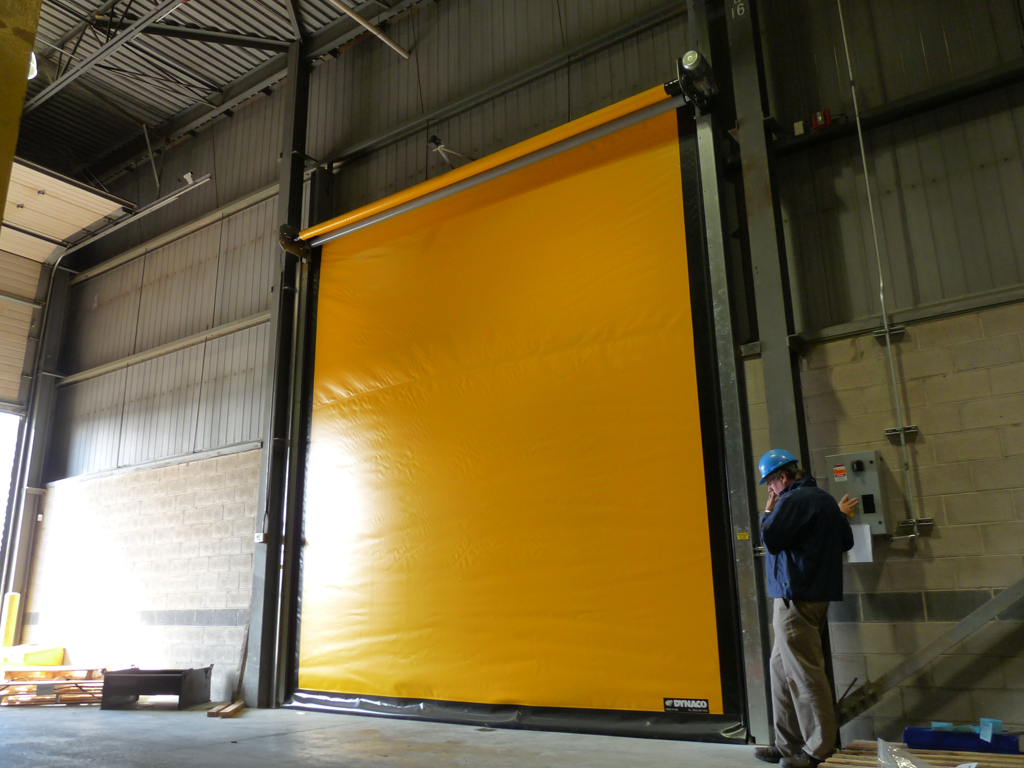The 2015 edition of the International Energy Conservation Code (IECC) will recognize high-speed doors and their energy-efficiency benefits for the first time.
The 2015 code defines a high-speed door and includes a maximum air leakage requirement through doors. The new high-speed door maximum air leakage requirement is 1.3 cubic feet per minute per square foot (cfm/sf). This is higher than the maximum sectional garage door requirement of 0.4 cfm/sf.
High-speed doors have a higher value because they must be flexible at the jambs to allow for both the speed and amount of movement during the life of the door. “The predominant benefit of high-speed doors is their ability to control ‘air exchange’ or the air flowing through a door opening when a door is not fully closed,” according to Jeff Wendt of Rytec Corporation.
When taking thermal transmittance (U-factor), air leakage, and door power usage into consideration, "air exchange" is the most significant part of the total energy loss for a door. High-speed doors are typically specified for applications requiring 75 to 100 cycles per day. Thus, these doors demonstrate superior overall energy efficiency when meeting demand for high-cycle operation in a building.
For more information, visit here.
Related Stories
| Aug 11, 2010
NoricF4 custom metal ICF frames receive fire ratings, comply with antiterrorism standards for buildings
Reward Wall Systems' NoricF4 Custom Metal ICF Frames have received fire ratings of 1.5 hours to 3 hours and they have been evaluated to be in compliance with the prescriptive requirements of the Department of Defense Minimum Antiterrorism Standards for Buildings for blast/force protection.
| Aug 11, 2010
AIA Course: Enclosure strategies for better buildings
Sustainability and energy efficiency depend not only on the overall design but also on the building's enclosure system. Whether it's via better air-infiltration control, thermal insulation, and moisture control, or more advanced strategies such as active façades with automated shading and venting or novel enclosure types such as double walls, Building Teams are delivering more efficient, better performing, and healthier building enclosures.
| Aug 11, 2010
Glass Wall Systems Open Up Closed Spaces
Sectioning off large open spaces without making everything feel closed off was the challenge faced by two very different projects—one an upscale food market in Napa Valley, the other a corporate office in Southern California. Movable glass wall systems proved to be the solution in both projects.







